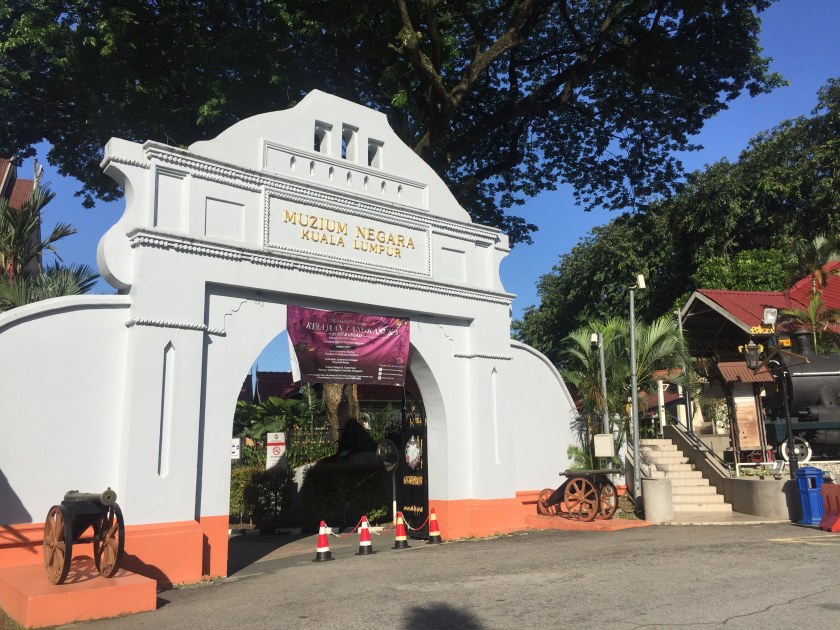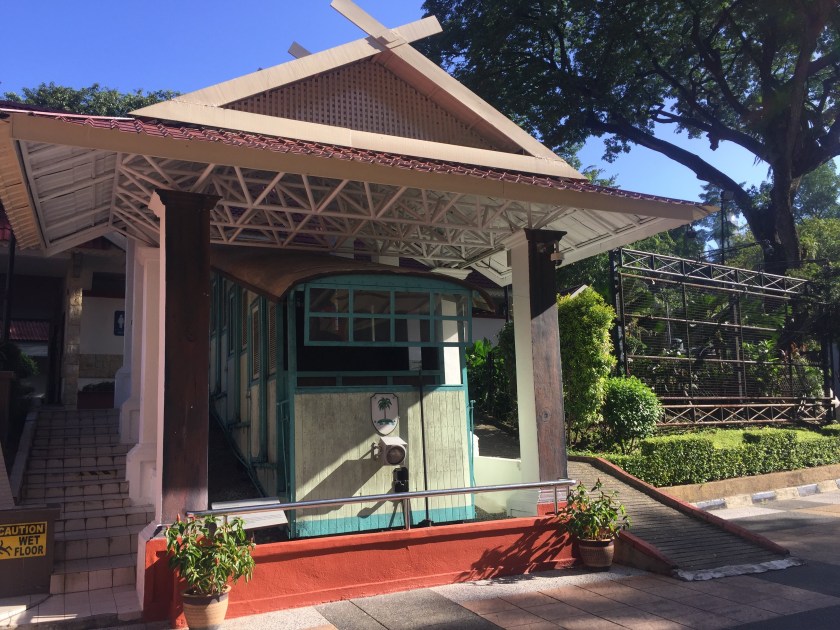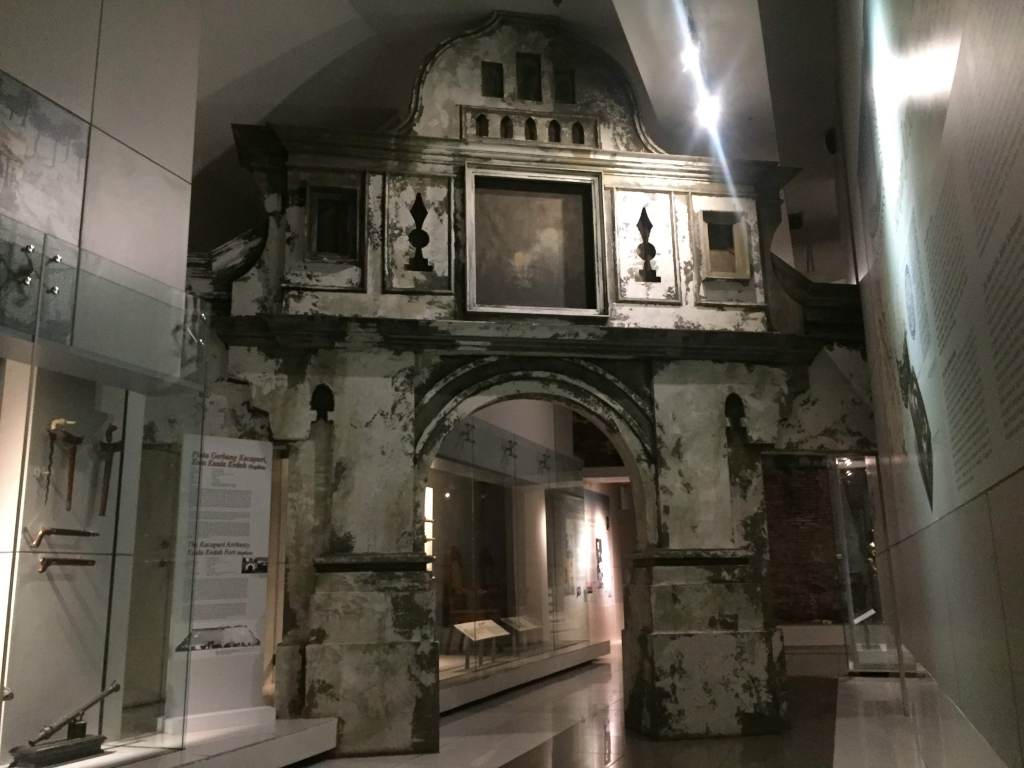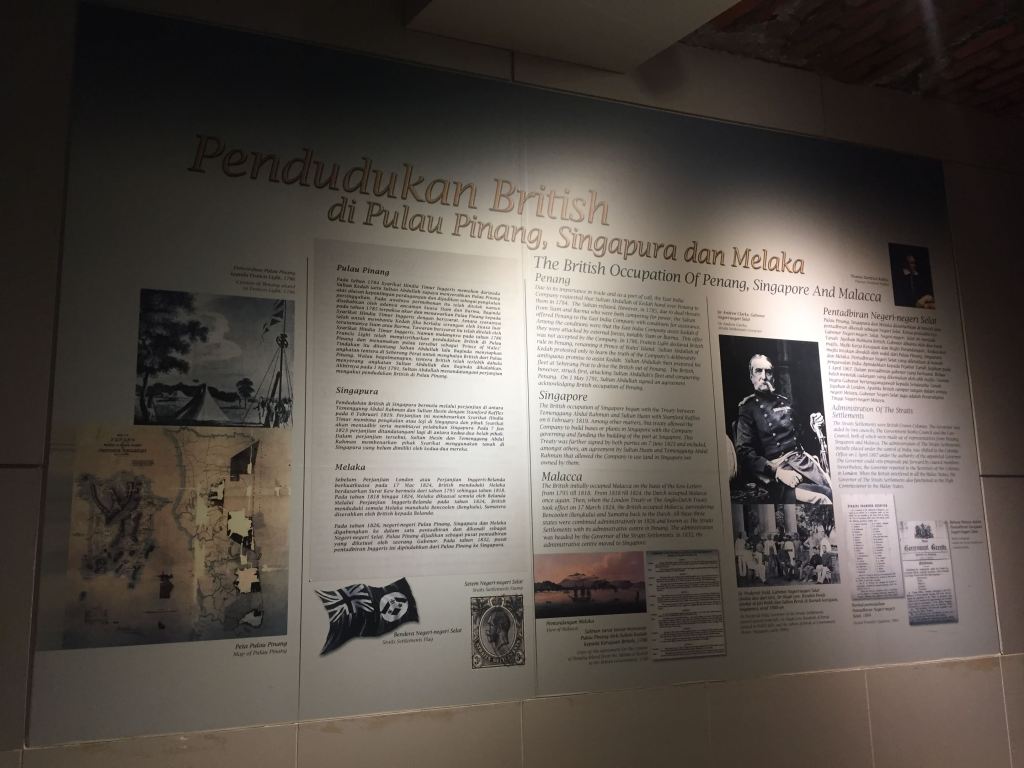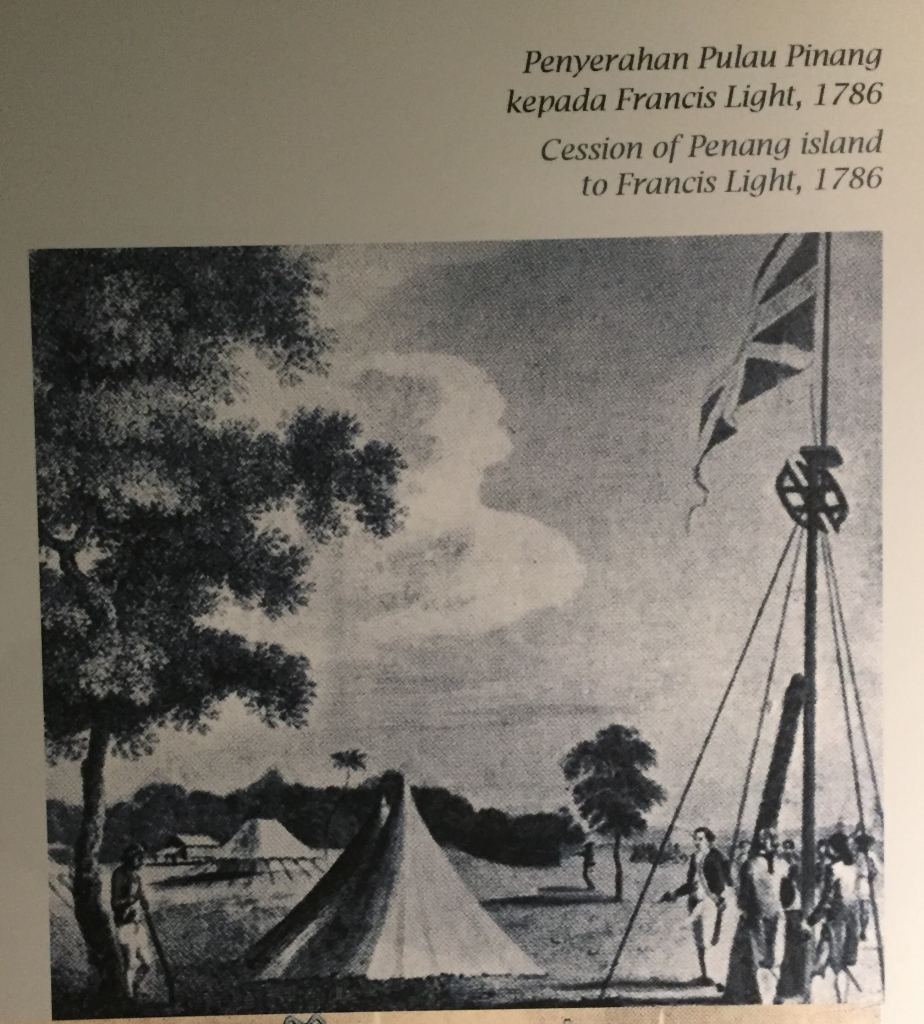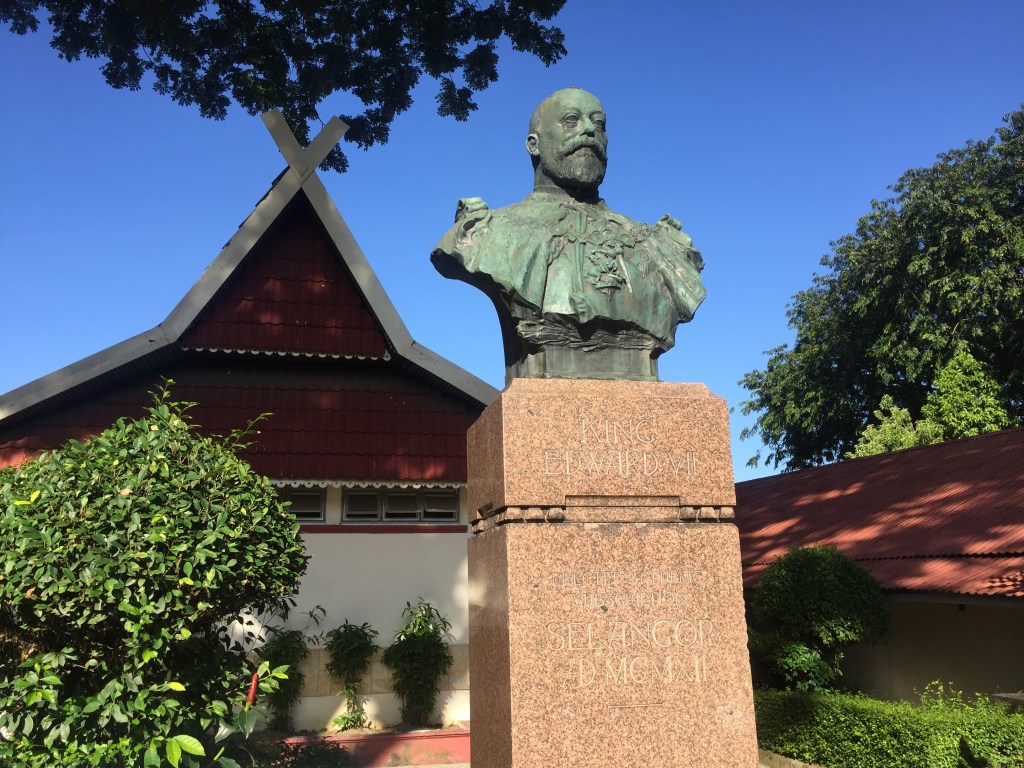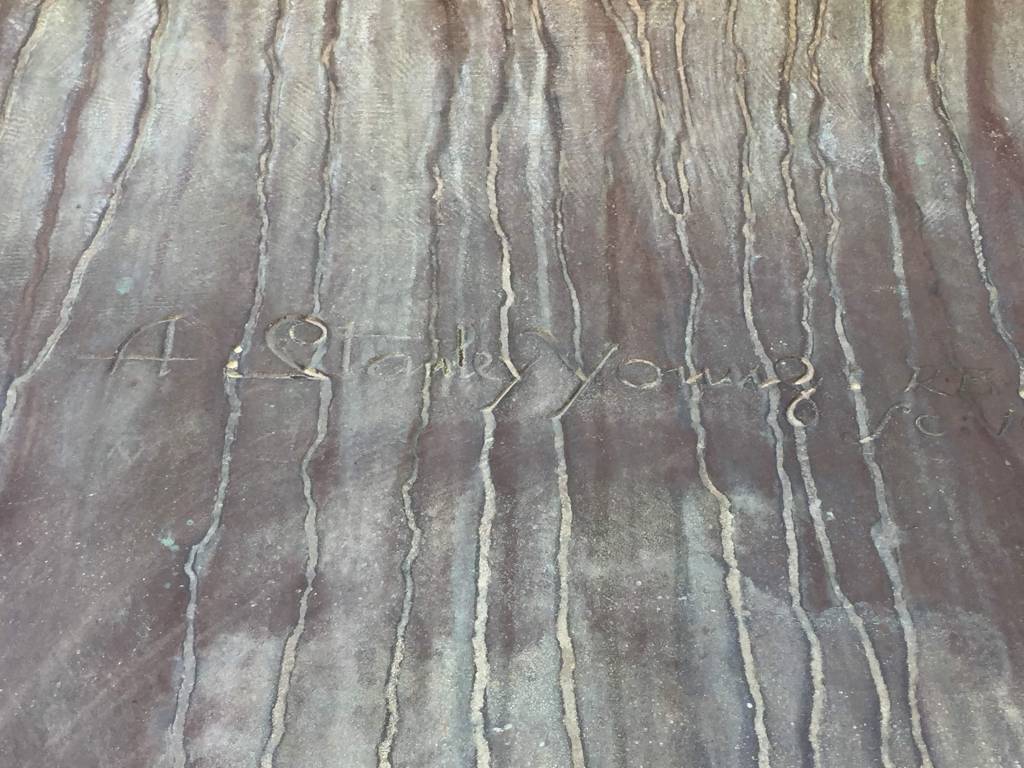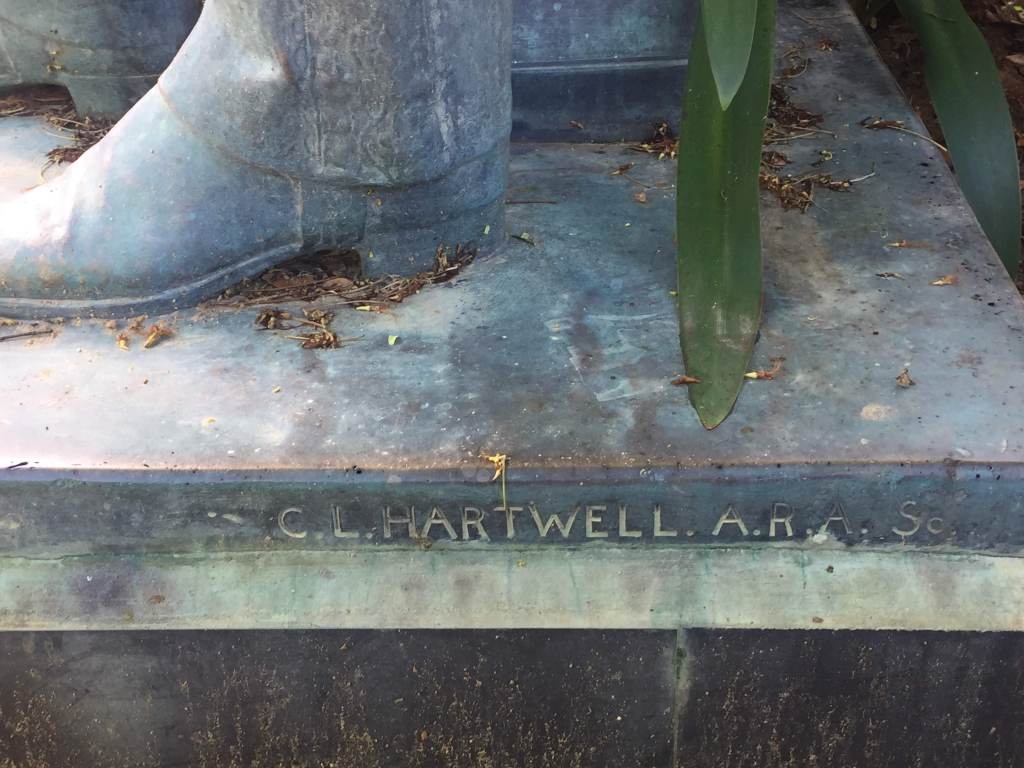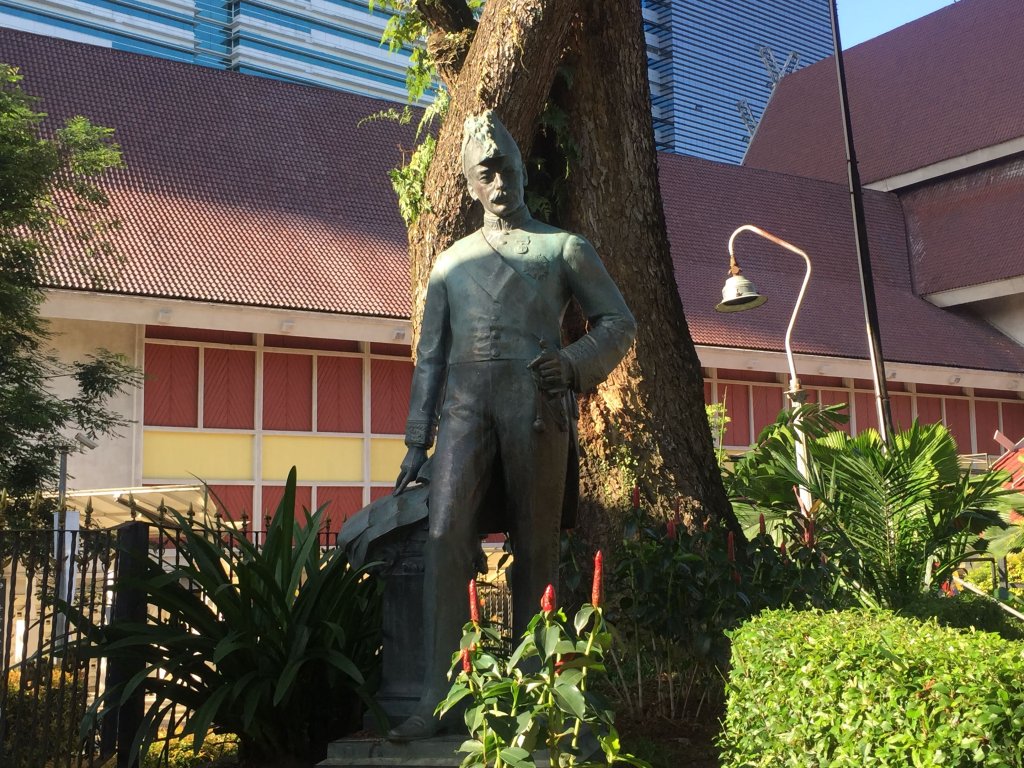by Eric Lim
I would like to bring your attention to two monuments located on the grounds of the National Museum. It is a pity that these monuments are hidden away in an obscure corner outside the main building. To access them: if you are entering the car park via Jalan Damansara, look out for a white archway that serves as one of the entrances to the National Museum (through the car park). Take the steps on the right (in between the archway and the locomotive) to reach the monuments. If you are already in the outside compound of the museum, locate the Bukit Bendera Penang Railway coach pavilion, and then take the steps on its right. Upon reaching the top, turn right for a further few steps. These two monuments are the King Edward VII bronze bust on a marble pedestal and the statue of Sir Frank Swettenham.
Right: Bukit Bendera Penang Railway coach pavilion
Before looking at the history of these two colonial monuments, it would be good to examine the white archway, which is a replica of Kacapuri Archway, one of two archways located at the Kuala Kedah Fort (the other archway is called the British Archway). Incidentally, there is also another replica (smaller in size) of the Kacapuri Archway at Gallery C in the main building.
The original fort was built during the reign of Sultan Sulaiman Shah II (1602-1619) with the help of the Portuguese who then used it as their military outpost. In 1619, Sultan Mahkota Alam of Aceh sent a fleet to destroy the fort and the Portuguese were ousted while 7,000 Malays including Sultan Sulaiman were taken captive. Next came the Bugis, who sided with the ruling Sultan Muhammad Jiwa against a power struggle with his younger brother in 1724. The feud ended two years later when the Bugis succeeded in driving away the enemy but it devastated Kedah. War broke out again in 1771; this time, the Bugis gave their support to dissident forces who wanted to depose Sultan Abdullah Mukarram Shah II, the 20th Sultan of Kedah. The Bugis managed to take control of the fort but Sultan Abdullah later obtained help from Captain Francis Light of the British East India Company (EIC), and the British recaptured the fort for Sultan Abdullah. Construction of the present fort then took shape and Sultan Abdullah immediately went on to strengthen the walls of the fort with stonework and bricks. He also purchased cannons from the British and Dutch, which were placed around the fort. The fort was completed in 1780.
The fort was then used by the EIC who in return, agreed to protect the Sultan from any attacks, in particular from its northern neighbour, the kingdom of Siam. This prompted the Sultan of Kedah to cede Penang Island to the EIC. In 1786, Francis Light declared British rule in Penang and named the island Prince of Wales Island and the town, Georgetown, in honour of King George III. However, the promise of protection by the British was never kept. The Siamese made a surprise attack in 1821 and the then Sultan of Kedah, Sultan Ahmad Tajuddin Halim Shah II, fled to Penang. In 1831, Tunku Kudin, the son of the Sultan of Kedah, and his men managed to drive the Siamese away from Kedah but the Siamese returned with a stronger force to take over the fort once again. It was the same story again in 1838, but that was the final time the Siamese laid siege to the fort. During the period of the Japanese Occupation (1941-1945), the fort was used as a military base by the Japanese. Today, the area is called Kuala Kedah Fort Historical Complex and it was certified as a ‘historical land site’ by the Department of Museums and Antiquities on 31 August 1978.
King Edward VII
King Edward VII was born on 9 November 1841 in Buckingham Palace, London. He was the second child and first son of Queen Victoria and Prince Albert and was given his father’s name and christened Albert Edward. Growing up, he was given rigorous education but he did not measure up to it. He was also forbidden to have a career in the army by his parents. In his role as Prince of Wales, he made many Royal Visits overseas that gained him popularity. In 1860, he became the first heir to the British throne ever to visit North America. It was a four- month round trip between the United States and Canada. He also toured the Middle East and India. In 1863, Albert Edward married Princess Alexandra of Denmark and they were bestowed a son, Albert Victor, the following year. Prince Albert Victor did not live long and died before both his parents in 1892. After the passing of Queen Victoria on 22 January 1901, Albert Edward ascended the throne and chose the title King Edward VII (Queen Victoria was at that time the longest-reigning British monarch, until 9 September 2015 when the current Queen Elizabeth II surpassed her). King Edward VII ruled for 9 years and he passed away on 6 May 1910 of heart failure.
Right: Sculptor’s name behind the bust
One year after the passing of King Edward VII, British officials in Kuala Lumpur decided to start a fundraising targeting two proposals – a memorial to the late King and upgrading works for the Straits and Federated Malay States Government Medical School in Singapore. A total of $2,446.89 (Straits Dollars) was collected for the memorial and $15,135.00 for the latter. The huge sum collected for the Medical School was made possible when local businessman Loke Yew contributed $15,000.00. In 1921, the medical school changed its name to King Edward VII College of Medicine.
The job to make a bronze bust of the late King was awarded to a young sculptor in London by the name of A. Stanley Young. The memorial was completed and shipped out from London on 30 December 1911 and when it reached our shore, it was immediately erected in front of the Government Offices (now Sultan Abdul Samad Building). The unveiling ceremony took place on 16 April 1912, performed by Lady Brockman, the wife of the Chief Secretary and witnessed by the Sultan of Selangor, Sultan Alaeddin Sulaiman Shah. During the Japanese Occupation, the bust was removed and hidden away by Mr. K.S Maniam of the Public Works Department. After the war, it was returned to its original site and now, the monument sits at the National Museum.
Sir Frank Swettenham
Sir Frank Athelstane Swettenham was born in Belper, England in 1850. He arrived in our country as a young lad of 21 and learned the Malay language. This proved useful when he was involved in the Pangkor Treaty in 1874 as a translator on behalf of the Straits Settlements. After the first British Resident of Perak, J.W.W. Birch, was murdered, he became the British Resident for Perak for a while before moving to Selangor where he became the third British Resident of Selangor. He then returned to Perak and played a role in the formation of the Federated Malay States in 1896. He was appointed the First Resident General of the FMS from 1 July 1896 to 4 November 1901, taking up residence at Carcosa in Kuala Lumpur. While in office, he attended the First Durbar of the FMS held at Istana Negara at Kuala Kangsar in July 1897. From 1901 to 1904, he was the Governor and Commander-in-Chief of the Straits Settlement; he retired in 1904. Sir Frank Swettenham was also a well-published author. His first book was “Vocabulary of the English and Malay languages” written in 1881. The book was printed at the Government Printing Office in Singapore. Upon retiring, he returned to London and died at a ripe old age of 96 on 11 June 1946.
Right: Statue of Sir Frank A. Swettenham
Sir Ernest Woodford Birch, the eldest son of J.W.W. Birch, was the eighth British Resident of Perak, from 1904 to 1911. When he retired, he initiated a fundraising project to build a monument to commemorate the services and contributions of Sir Frank Swettenham. The monument took the form of a bronze statue made by a well-known English sculptor by the name of C.L Hartwell, A.R.A of London. The statue was erected at the front right-hand corner of the Government Offices (now Sultan Abdul Samad Building), facing Gombak River. The unveiling ceremony on 19 January 1921 was attended by the sultans of Perak, Selangor, Pahang and Negri Sembilan as well as High Commissioner Sir Lawrence Guillemard, Chief Justice Sir John Murison and Sir Ernest Birch. The statue was removed during the Japanese Occupation but re-erected on the original site on 15 October 1946. A month later, sultans from nearly all the Malay States attended the unveiling of the restored statue by the then highest British officer, Sir Edward Gent. It was again moved in 1964 and today, the statue of Sir Frank Swettenham stands on the grounds of the National Museum, next to the bronze bust of King Edward VII.
Footnote
Coming event – Festival Kota Kuala Kedah (Kuala Kedah Fort Festival)
18-21 March 2020 @ Muzium Kota Kuala Kedah.

